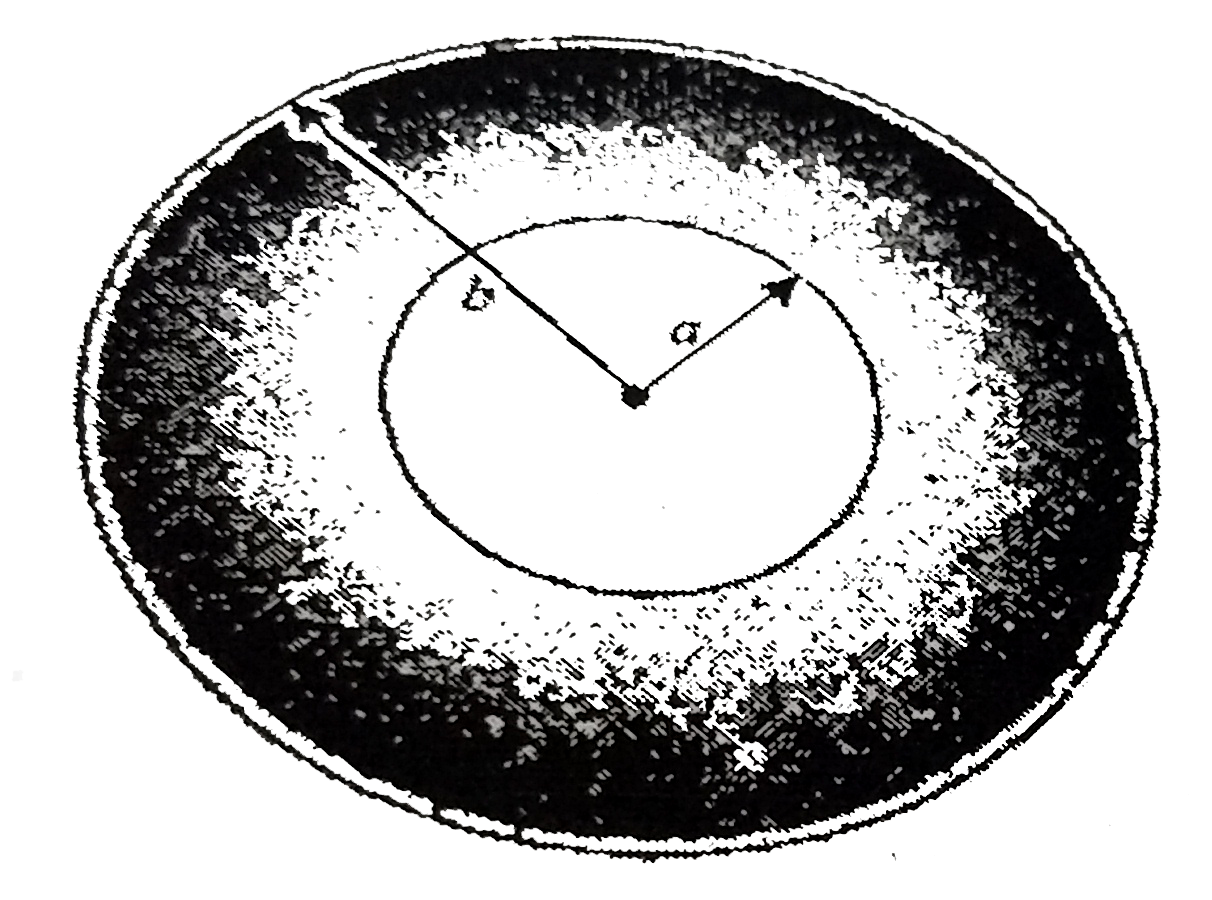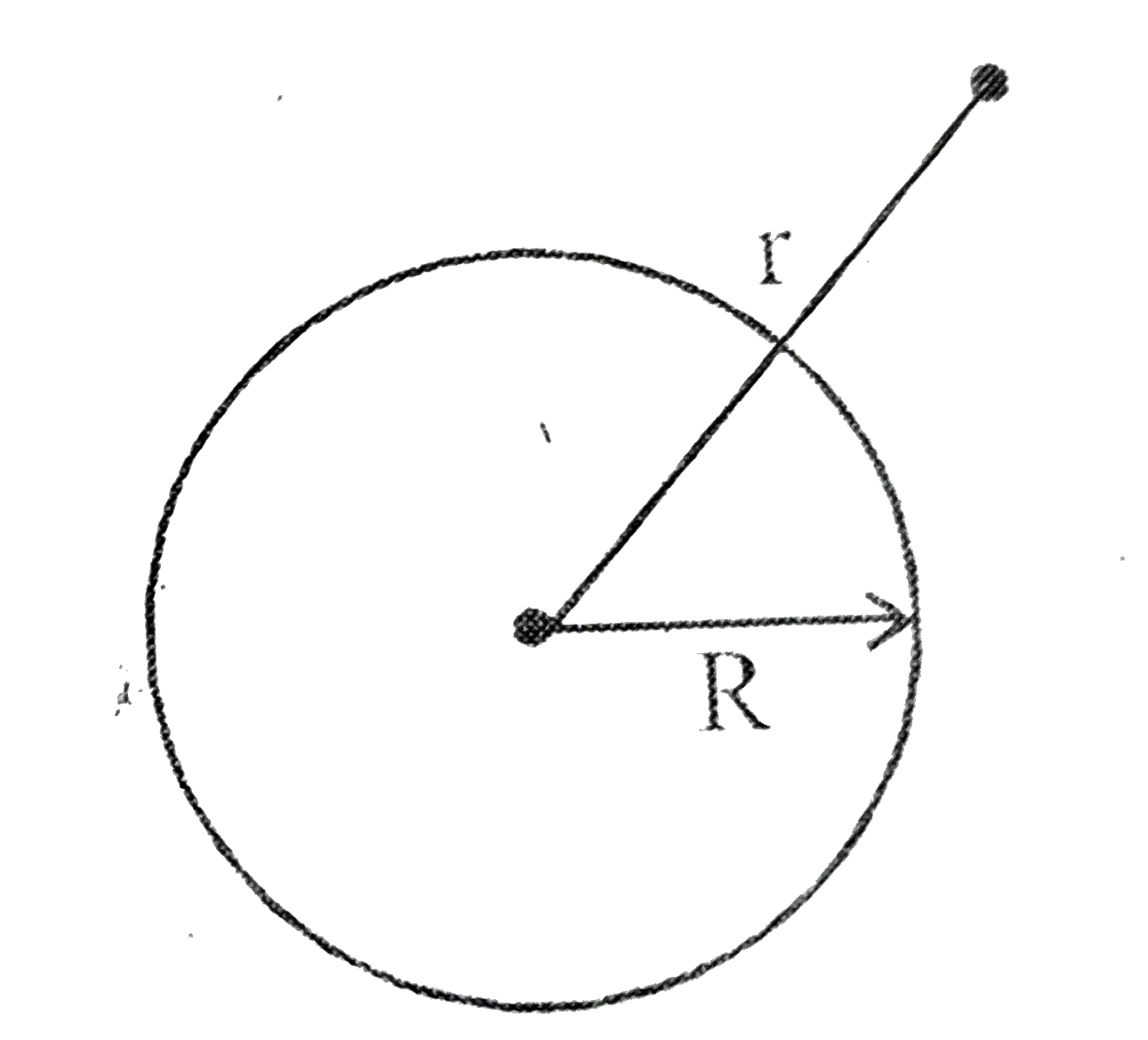A non-conducting hollow sphere having inner and outer radii a and b respectively is made ofa material having di-electric constant K and has uniformly distributed charge over its entire solid volume. Volume density of charge is ρ . Calculate potential at a distance r from its centre when :

(a) r>b,
(b) r<a,
(c) a<r<b
The correct Answer is:[(a) V1=p(b3−a3)3ε0r;
(b) Vf=p(b3−a3)3eπlson0b+p3ε0K[(b2−a22)−a3(b−a)ab]
(c) V=p(b2−a2)3ε0b+p3ε0K[(b2−a22)−a3(b−r)rb]
Step by step video, text & image solution for A non-conducting hollow sphere having inner and outer radii a and b respectively is made ofa material having di-electric constant K and has uniformly distributed charge over its entire solid volume. Volume density of charge is rho . Calculate potential at a distance r from its centre when : (a) r gt b, (b) r lt a, (c) a lt r lt b by Physics experts to help you in doubts & scoring excellent marks in Class 12 exams.
Topper's Solved these Questions
- BOOK - PHYSICS GALAXY - ASHISH ARORACHAPTER - ELECTROSTATICSEXERCISE - Advance MCQs40videos
ELECTROSTATICS
- BOOK - PHYSICS GALAXY - ASHISH ARORACHAPTER - ELECTROMAGNETIC INDUCTION AND ALTERNATING CURRENTEXERCISE - Advance MCQs33videos
ELECTROMAGNETIC INDUCTION AND ALTERNATING CURRENT
- BOOK - PHYSICS GALAXY - ASHISH ARORACHAPTER - GEOMETRICAL OPTICSEXERCISE - Unsolved Numerical Problems107videos
GEOMETRICAL OPTICS
Similar Questions
A shere of radius a is uniformaly charged thoughout its volume with a volume change density of σ. Calculate the electeric field at a distance r form the centre of the sphere when(i)r<a(ii)whenr>a.
View SolutionIf the potential at the center of a uniformly charged sphere of radius R is V then electric field at a distance r from the center of sphere will be (r<R) : -
 View Solution
View Solution
Knowledge Check
- Question 1 - Select One
A sphere of radius R has a charge density σ. The electric intensity at a point at a distance r from its centre is
AE=σR2∈0kr2BE=σ∈0kCE=R2DE=∈0kr2σ2 - Question 2 - Select One
There is a solid sphere of radius R having uniformly distributed charge throughout it. What is the relation between electric field E and distance r from the centre (r lt R) ?
AE∝r−2BE∝r−1CE∝rDE∝r2 - Question 3 - Select One
An insulated sphere of radius r haas a uniform volume charge density λ. The electric field at a point A, which is at distance r from its centre is given by (R>r)
AZeroBRλ/3∈0C2rλ3∈0Drλ3∈0
A solid sphere of radius R has a mass distributed in its volume of mass density ρ=ρ0 r, where ρ0 is constant and r is distance from centre. Then moment of inertia about its diameter is
View SolutionAn insulated sphere of radius R has a uniform volume charge density λ. The electric field at a point A, which is at distance r from its center is given by (R>r)
View SolutionA non-conducting solid sphere of radius R is uniformly charged. The magnitude of the electric filed due to the sphere at a distance r from its centre
View SolutionA non-conducting solid sphere of radius R is uniformly charged. The magnitude of the electric filed due to the sphere at a distance r from its centre
View SolutionA solid sphere of radius R has charge q uniformly distributed over its volume. The distance from it surfce at which the electrostatic potential is equal to half of the potential at the centre is
View Solution

